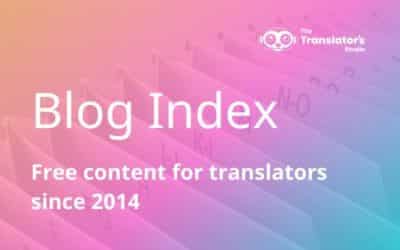What makes people think that Google Translate is as good as a human translator? This article takes a light-hearted look at human translation vs machine translation.
In a recent article, Lucy wrote about “10 Reasons to Use Professional Translation Services and Not Google Translate”. She mentioned the fiasco involving the translation of the official tourism website of Santander, Spain. They decided to skip human translators and use Google Translate, into six languages. Needless to say, the results were an international joke.

Why would any business take such a risk?
According to the article on the El Español website, the officials claimed it was because they ran out of time. But isn’t that a result rather than a cause? Make sure you don’t suddenly find yourself out of time and having to desperately turn to unedited, non-customised machine translation. Read this complete customer guide on how to get a translation to make sure you remember the translation part of your project.
Machine translation is cheaper
If you ask me, price is the reason why your average organisation would use machine translation over human translation. Running out of time is a result of not having sufficient resources dedicated to a project. Turning to Google Translate to resolve this is akin to buying a ticket to win the EuroMillions. You know there’s no chance of success, yet you can visualise success, and that’s convincing enough.
The most important thing customers don’t know about machine translation
Had the translation buyers at the web design company—to which the civil servants of Santander tourism reportedly outsourced their website creation along with translation into six languages for the bargain price of 6,000 euros—known anything about machine translation, they wouldn’t have used Google Translate. Companies that use machine translation properly have their own customised translation engines. You can’t just stick anything in and get the right thing out the other end. You have to train the machine with lots of data and glossaries.The most important thing that customers don’t know about #machinetranslation. #t9nCLICK TO TWEET
If these companies are translating something lots of people may read, like product descriptions on Amazon, they pay humans to post-edit the results from this trained machine. That can work out cheaper. But no human translator in their right mind will post-edit anything that comes out of Google because it’ll take them just as long as translating from scratch. If you’d like to get a few more basics about machine translation then you may like this guest post I wrote for ProZ.com: 10 Things Translators Need to Know about Machine Translation. If you want more in-depth information, try my webinar Your Essential Machine Translation Briefing.“The machine doesn’t care about any of this. You need a human translator if you want someone who cares.”
The difference between human translation and machine translation
Machine translation
With Google Translate, you put the text in and, if it’s short, it almost instantly comes up with a translation. It produces this translation by using an artificial neural network. That isn’t a brain, which means it can’t understand meaning based on context, interpret different meanings or innately recognise good or bad quality. In short, it makes lots of boo-boos.
If you have access to a trained machine translation engine then you can get better results. These machines may be based on programmed rules. They might decide what option to select using statistics. They may use neural networks. Read about the history of machine translation to better understand. The raw results won’t be perfect, particularly if you’re trying to translate a marketing or creative text, like a tourism website. So, you then bring in human translators to think, identify boo-boos and correct them. It’s only economically interesting to do this with certain texts because professional human translators are fast. The results from the machine have to be good to make post-editing worthwhile.
Human translation
You could say that you can put a text into my brain and it comes out the other end as well. Though processing can take some time. Here’s why.
Stage 1: writing the draft translation
I start by looking over the original text, to make sure everything seems to be in order. Next, I load it in my translation software. I start up my voice recognition software and begin dictating a draft translation. At this stage, I’m discovering the intricacies of the text. These include: the text type, the writer’s style, the writer’s purpose, the quality of the writing, the messages and sub-messages, how the different parts of the text link to each other, how much research I’ll need to do, any needs as far as SEO is concerned, any possible errors in the Spanish text, any potential problems. I need all this information to produce a correct translation. The machine can’t think like this.
Sometimes, I’m not sure what the Spanish means and have to do research. This can be very time-consuming. In a creative translation, like a slogan, you have to try to identify the chain of thought and information that led the copywriter to come up with it. That takes ages.
Lots of words have more than one meaning and many synonyms. You have to be very careful to select the right term, particularly in specialist genres. Do you know when empeine should be translated as instep, vamp or upper? Neither does Google Translate. Do you know when empeine should be translated as instep or groin? You do, but Google Translate still doesn’t. For more about vamps and uppers read Lucy’s article “Why I Specialised in Fashion Translation”.
Stage 2: checking the translation
You need the self-discipline of a nun for this bit. You have to look at every single letter, word and phrase in the Spanish text, and compare them to every single letter, word and phrase in the English text. And if the text is 50 pages long, then you do that for 50 pages, treating every syllable with the same care.
Computers are good at this sort of boring task, and fast. But machine translation engines won’t necessarily get all the percentages and commas in the right place, because the process doesn’t work like that. Professional human translators use software to help them with accuracy. But I know of no tools that can automate this checking process.“You can’t just stick anything in and get the right thing out the other end. You have to train the machine with lots of data and glossaries.”
Stage 3: editing the translation
This is where you have to read a text that you know inside out as if you’ve never seen it before. Trained, experienced eyes can see where the translation is literal or illogical. The professional translator must have the necessary knowledge related to style, grammar and punctuation conventions, not only for their language, but for the genre that they’re writing for. Beyond that, they must have developed a broad enough active vocabulary to produce natural collocations, find appropriate synonyms and produce a suitable turn of phrase. The machine doesn’t get this far.
Stage 4: proofreading the translation
After editing, I remove the text from my CAT tool and open it up in Word. Now I have to comb through the text once again, checking for technical errors and inconsistencies. I prefer to proofread in a text editor like Word because you see the text from a different angle, which increases your chances of spotting problems. If I’m working for a direct client, then I go the extra mile and listen to what I’ve written using Microsoft text-to-speech. That makes it very hard for typos to get through. I also do presentation checks and see if I want to make any notes for the client. The machine doesn’t care about any of this. You need a human translator if you want someone who cares.
So, does machine translation or human translation win?
Machine translation is faster, but the output is unreliable. In certain domains, with high volume, if you use a customised machine translation engine with human post-editors, then you can get satisfactory results for less than working with humans alone. But take speed away and in the battle of human translation vs machine translation, we still kick artificial ass.
If you’re an official from the Santander tourism board, or any other translation buyer for that matter, don’t be tempted by the machine. Contact us for that unrivalled human touch.





Hi,
Are there any references for your blog?
Hello Inam, I don’t have a reference list for this post, but if you go here: https://translatorstudio.co.uk/machine-translation-history/ you can find some academic references. The slides of my webinar on ProZ.com, Your Essential Machine Translation Briefing (link above in the article) also include a very long list of sources, which could be useful for academic research. If you’re looking for references to help with your studies, please drop me a line through the website and I’ll see if I can email you a list.